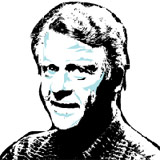Birth of a Book on Hidden Cuba
Photographer’s Travels to Island Nation Drive Unplanned Project

With growing unease, photographer Chris Messner felt a change in the attitude of the Cuban military officer who was questioning him about his trip to Havana. The polite inquiries in the small back room of the airport had turned into an interrogation, and it focused on why he had brought two used laptop computers with him.
With the Goletan’s luggage wide open, the English-speaking officer pawed through it as if he were looking for contraband. Just as the search reached the American’s packed underwear, Messner tried to ease the tension. “At least they’re clean,” he cracked.

The officer was not amused. “He shouted at me,” Messner recalled, “and I realized this was serious.” Finally he persuaded his inquisitor that he truly was there to photograph Cuban life and scenery. However, he left the airport carrying just one laptop.
With the severing of U.S.-Cuba diplomatic relations in 1961 and a trade embargo the next year, there was no one to help regain the confiscated laptop Messner had hoped to give to a Cuban friend.
This was 2009 and Messner’s third trip to Cuba in less than two years. His first two trips of 10 days each were with professional groups, which were on short leashes in terms of where members traveled. Nonetheless, the retired landscape contractor had absorbed enough of the island’s natural beauty and interesting people to whet his appetite for more. “Before it changed, I realized I really wanted to see this place” without possible interference from government minders, he said.
He planned to document, with empathy and his 35mm Canon, what he experienced. He also had a contact, a Cuban national named Jesus, who became his friend and, at times, interpreter on the 2009 journey into the countryside. It is this exploration that shaped his soon-to-be-released book, Cuba Open from the Inside.
A possible photo book with extended captions was originally in the back of his mind; then he visited San Juan Hill. To Messner’s surprise, the scene of the famous Spanish-American War clash with Theodore Roosevelt’s Rough Riders in 1898 was largely intact. Recalling his first impression of the rusting war debris, trenches, and foxholes on the ridge, he said, “It’s not that big a hill, and it looked like the battle had just ended.”
At that moment, a book was born. He knew he had to capture in words as well as with images what he was witnessing throughout rural Cuba, where a quarter of the population lived. He sensed that the embargo could not continue another 50 years; tourism was slowly increasing from the United States as well as Europe. Commercialization would follow inevitably, he felt, and the generous, open people he met on the road might disappear—or at least become harder to find.
Many scenes captured his imagination: apparently unchanged, centuries-old villages; an ancient cross in a Baracoa church that is said to be one of the original crosses Columbus planted when he claimed the land for Spain; a gold-trimmed altar painted white to fool marauding pirates like Henry Morgan.
The local food, often cooked in coconut milk or spicy red sauces, ensnared his palate. “It was wonderful food and I talk about it in the book,” he said with relish.
After traversing some 4,000 miles in a mysterious country only 90 miles off Florida’s coast, Messner acknowledged that the book’s value to him goes beyond an honest effort to balance views of a nation too often interpreted through the prism of politics. It is also, he said, the equivalent of the college degree he never received.
Messner has dyslexia, a burden that turned traditional, writing-based schooling into a frustrating experience, but he made it to a local community college. A severe injury in track ended his formal education and the promise of an athletic career. “I had to work, and landscaping felt natural to me,” he recalled. Landscaping developed his power to visualize a project and tutored his artistic eye, handy training for a photographer.
The challenge of dyslexia lengthened the writing process to the two years he said it took him to wrestle with the text, even with the editing help of his wife, Anne. “I put my heart and soul into this book,” said Messner, declaring that the resulting text “is the closest, most honest description of what I usually use my pictures to say. Knowing I can do this is a big thing for me.”
His personal history informed a unique perspective that shines out of the Cuba book and the pictures that he and his publisher, Sea Hill Press of Santa Barbara, have selected. The publisher’s Web site features the book, now in the prepublication stage. Greg Sharp, who founded Sea Hill in 1989, reported that the book will ship in mid July and bookstores should stock it by September 1.



